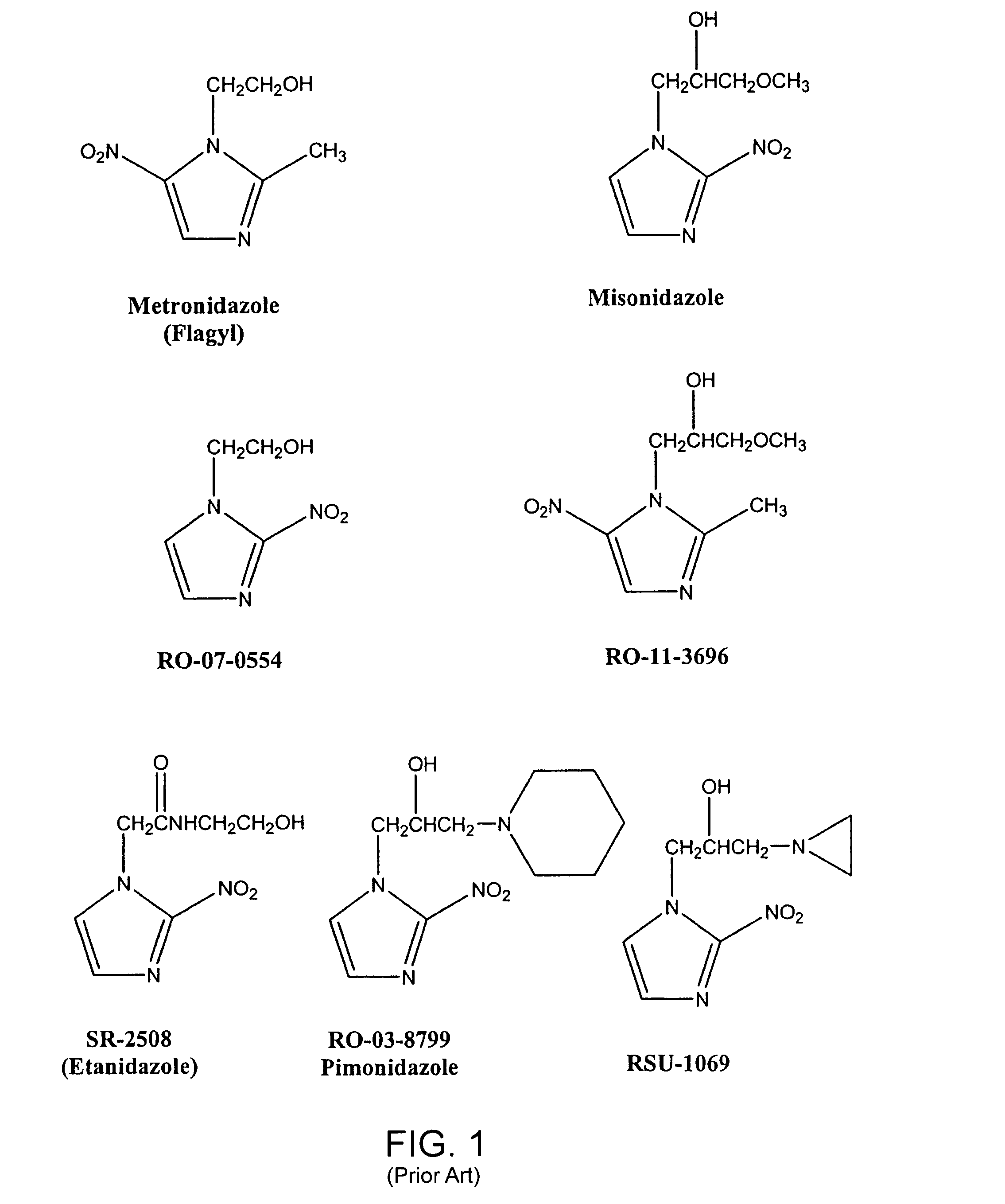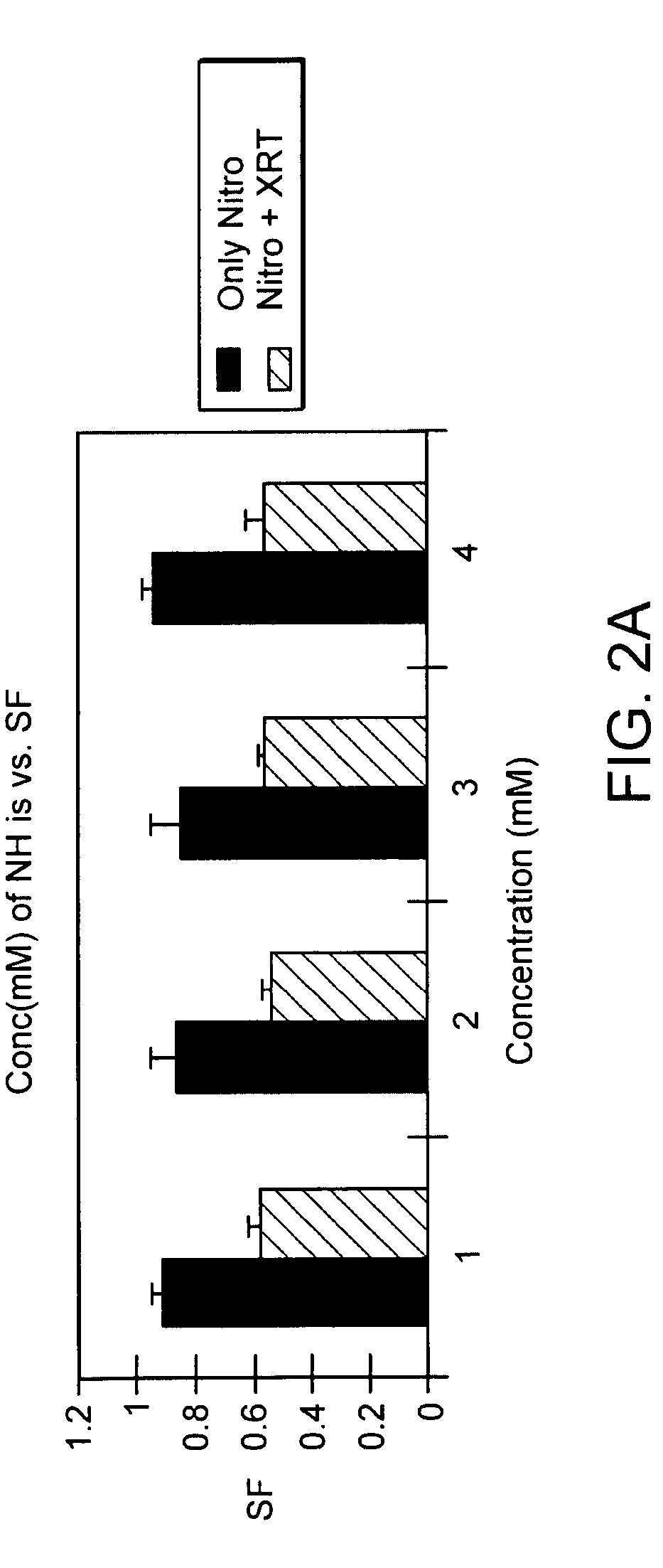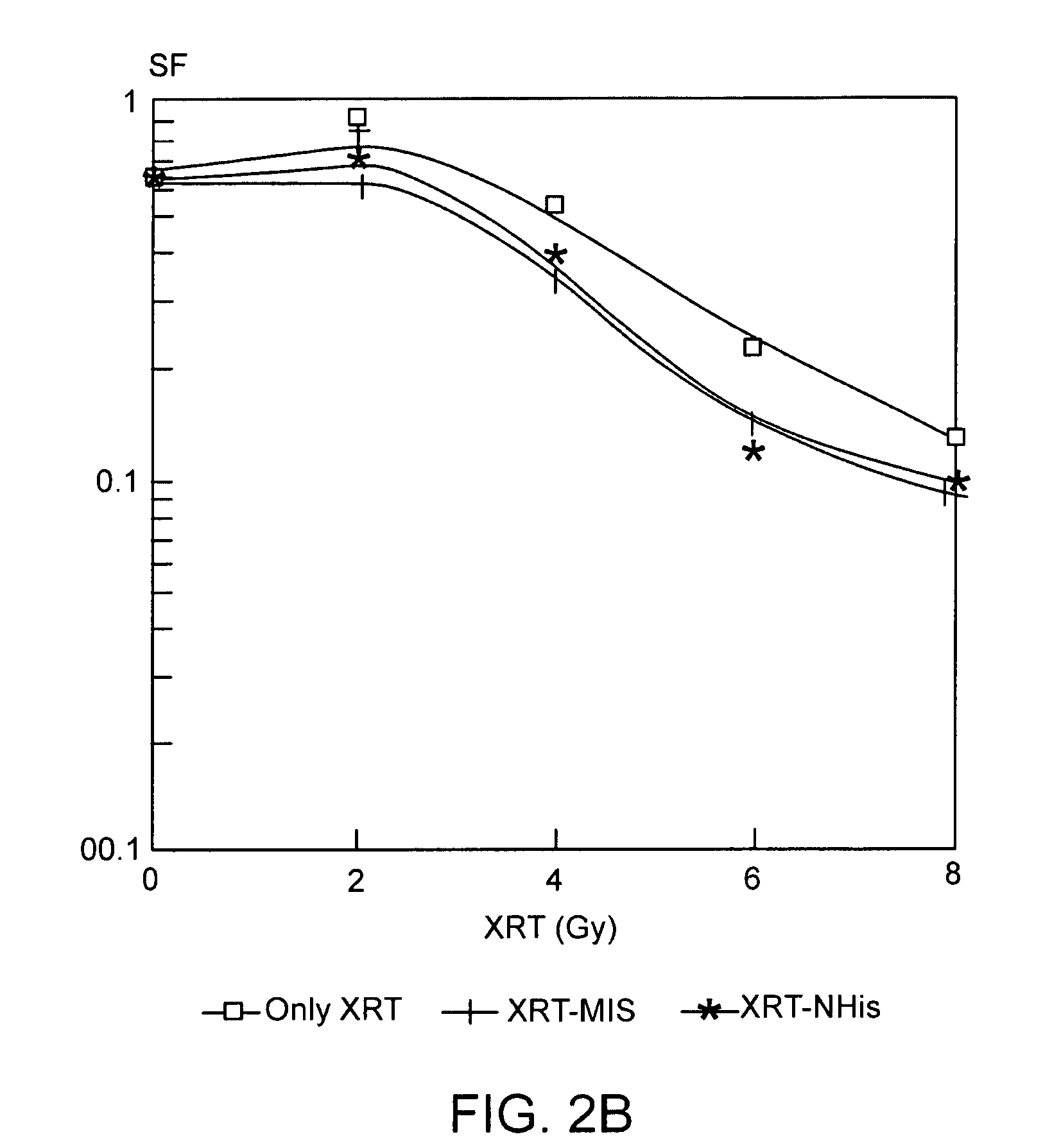Radiosensitizer formulations and methods for use
a radiosensitizer and formulation technology, applied in the field of histidine derivatives, can solve the problems of difficult to kill hypoxic cells with ionization, non-reversible and lethal, and administration of hyperbaric oxygen or carbogen (a mixture of oxygen and carbon dioxide)
- Summary
- Abstract
- Description
- Claims
- Application Information
AI Technical Summary
Problems solved by technology
Method used
Image
Examples
example 1
In Vitro Study of 4(5)-Nitrohistidine as a Radiosensitizer
[0043]An in vitro study using Chinese hamster ovary (CHO) cells was carried out using F12 medium with fetal calf serum for growth of the CHO cells. A 9 MeV electron beam, generated by a Varian Clinac 1800 instrument, was used to irradiate the Petri dishes, at a dose of 300 cGy, and a concentration of 1 to 4 mM 4(5)-nitrohistidine was added alone, or in combination with the radiation dose. Results of this study are shown in FIG. 2A. As can be seen, controls with nitrohistidine alone at all 4 concentrations did not exhibit any toxicity, as seen in the constant levels of cells remaining at all 4 concentrations of nitrohistidine (exhibited along the Y-axis as the S. fraction—SF—the surviving fraction of cells, as a log scale from 10 to 1, with 1 being the number of cells present at time zero). In contrast, in the presence of ionizing radiation (Nitro+XRT) it can be seen that the S. fraction value decreased from just under 1 to ju...
example 2
In Vitro Study of 4(5)-Nitrohistidine as a Radiosensitizer Under Hypoxic Conditions
[0044]As in Example 1, CHO cells were grown in F12 medium supplemented with fetal calf serum. However, before ionizing radiation treatment, the CHO cells underwent a 30-minute pre-incubation in hypoxic conditions, in the presence or absence of 2 mM 4(5)-nitrohistidine. A 9 MeV electron beam, as in Example 1 above, was used to deliver the radiation doses ranging from 0 to 10 Gy. FIG. 3 shows the S. Fraction plotted against radiation dose, in Gy, at 0, 2, 4, 6, 8, and 10 Gy for radiation alone (XRT, indicated with ) and radiation plus 2 mM nitrohistidine (XRT +Nitrohistidine, indicated with ).
[0045]As can be seen in FIG. 3, the cells exposed to 2 mM 4(5)-nitrohistidine exhibited a radiation dose-dependent depletion of the S. Fraction consistently over that observed with just radiation alone, down to about 0.006 at 10 Gy. The calculated enhancement ratio, at the 0.1 level SF value, equivalent to the kill...
example 3
In vitro Synergism of Buthionine Sulfoximine and 4(5)-Nitrohistidine
[0046]Chinese hamster ovary cells were grown on F12 medium supplemented with fetal calf serum. Cells were treated with dosages of radiation from 0 to 10 Gy, using a 9 MeV electron beam as above, either alone or in the presence of nitrohistidine, buthionine sulfoximine, or 4(5)-nitrohistidine plus buthionine sulfoximine together. When present, the buthionine sulfoximine and 4(5)-nitrohistidine were added at 2 mM concentration. As can be seen in FIG. 4, results with cells treated with dosages of radiation from 0 to 10 Gy alone (XRT, indicated by ), or in the presence of 4(5)-nitrohistidine (XRT+NHis, indicated by ├), buthionine sulfoximine (XRT+BSO, indicated by ), or 4(5)-nitrohistidine plus buthionine sulfoximine together (XRT+NHis+BSO, indicated by ) show that the radiation plus NHis plus BSO exhibited an enhanced effect relative to radiation alone or with either the NHis or BSO singly. S. fractions remaining for t...
PUM
| Property | Measurement | Unit |
|---|---|---|
| size | aaaaa | aaaaa |
| size | aaaaa | aaaaa |
| depth | aaaaa | aaaaa |
Abstract
Description
Claims
Application Information
 Login to View More
Login to View More - R&D
- Intellectual Property
- Life Sciences
- Materials
- Tech Scout
- Unparalleled Data Quality
- Higher Quality Content
- 60% Fewer Hallucinations
Browse by: Latest US Patents, China's latest patents, Technical Efficacy Thesaurus, Application Domain, Technology Topic, Popular Technical Reports.
© 2025 PatSnap. All rights reserved.Legal|Privacy policy|Modern Slavery Act Transparency Statement|Sitemap|About US| Contact US: help@patsnap.com



